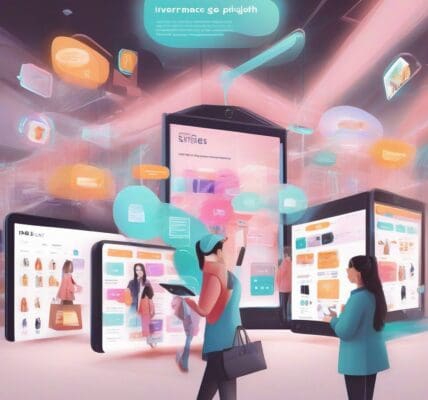Small stores, big footprint: 3 ways retailers can leverage digital tech to optimize small spaces
The retail landscape is undergoing a transformation, primarily influenced by the rise of online shopping. Many consumers now favor the convenience, extensive selections, and personalized experiences offered by e-commerce platforms. This shift has forced brick-and-mortar retailers to rethink their strategies, particularly smaller stores that struggle to offer the same level of service and variety as larger establishments. However, digital technology provides an array of solutions that can help these retailers maximize their small spaces. Here are three effective strategies to optimize small format stores using innovative digital technologies.
1. Implement AI to Enhance Customer Interaction
Artificial intelligence (AI) can significantly elevate the customer experience in small format stores. Traditionally, staff members provide personalized recommendations based on their knowledge and interaction with customers. However, staff availability can vary, leading to inconsistent service. AI technology can fill this gap by delivering personalized product suggestions based on shopper behaviors and preferences.
A notable example is the integration of AI-driven apps and kiosks in small retail environments. These tools allow customers to receive recommendations tailored to their browsing history and purchasing patterns, similar to their online shopping habits. According to a recent survey, 59% of consumers expressed interest in utilizing AI applications during their shopping experiences. By adopting AI, retailers can offer a unique in-store experience while helping staff focus on providing deeper customer engagement.
For instance, when shoppers interact with an AI interface, they receive real-time recommendations. If they show interest in a particular product, the AI can suggest complementary items, thereby increasing basket sizes via effective cross-selling techniques. This technology not only streamlines the shopping process but also keeps customers engaged and satisfied, ensuring a more enjoyable in-store experience.
2. Leverage Digital Self-Service for Inventory Display
One of the biggest challenges for small format stores is the limited space available for product displays. This often results in a lack of visibility for certain merchandise. However, digital self-service kiosks and mobile devices can expand the inventory that shoppers can access while shopping in-store.
A successful example of this approach is Between the Flags, an Australian specialty store that offers a wide range of sheepskin boots. When customers visit, they typically see a limited selection due to space constraints. To overcome this, Between the Flags implemented an interactive digital platform that allows customers to browse their entire collection — not just what’s on display.
By placing interactive screens within the store, customers can search for specific products, check sizes, and even discover items they didn’t know they wanted. This led to an impressive 64% increase in overall revenue for Between the Flags as shoppers engaged with their digital self-service options. It enabled the store to showcase a broad range of products without the limitations of physical inventory space.
3. Utilize Integrated Technology for Inventory Insights
For small format retailers, efficiently managing inventory is crucial due to limited backroom space. Traditional inventory management methods can lead to either overstocking of slow-moving items or understocking of popular products. Leveraging integrated technology allows retailers to gather insights into customer buying patterns instantly.
With self-service platforms and mobile technology, businesses can track customer preferences and sales trends in real-time. This enables them to stock items that are in high demand and minimize wasted space on products that do not perform well. In the case of Between the Flags, they learned which styles of boots were most popular and adjusted their inventory accordingly. This strategic use of technology resulted in a 28% reduction in overall stock holdings while still providing customers access to the entire collection online.
In summary, small format stores can thrive in today’s competitive retail environment by leveraging digital technologies. Implementing AI enhances customer interactions, utilizing self-service kiosks expands the visible inventory, and integrated technology enables better inventory management. Instead of trying to compete solely on physical space, retailers can create a shopping experience that highlights the best of both worlds: the convenience of online shopping and the tactile benefits memory of in-store browsing. As these digital strategies continue to evolve, the future of retail includes environments that progressively adapt to meet consumer needs.












